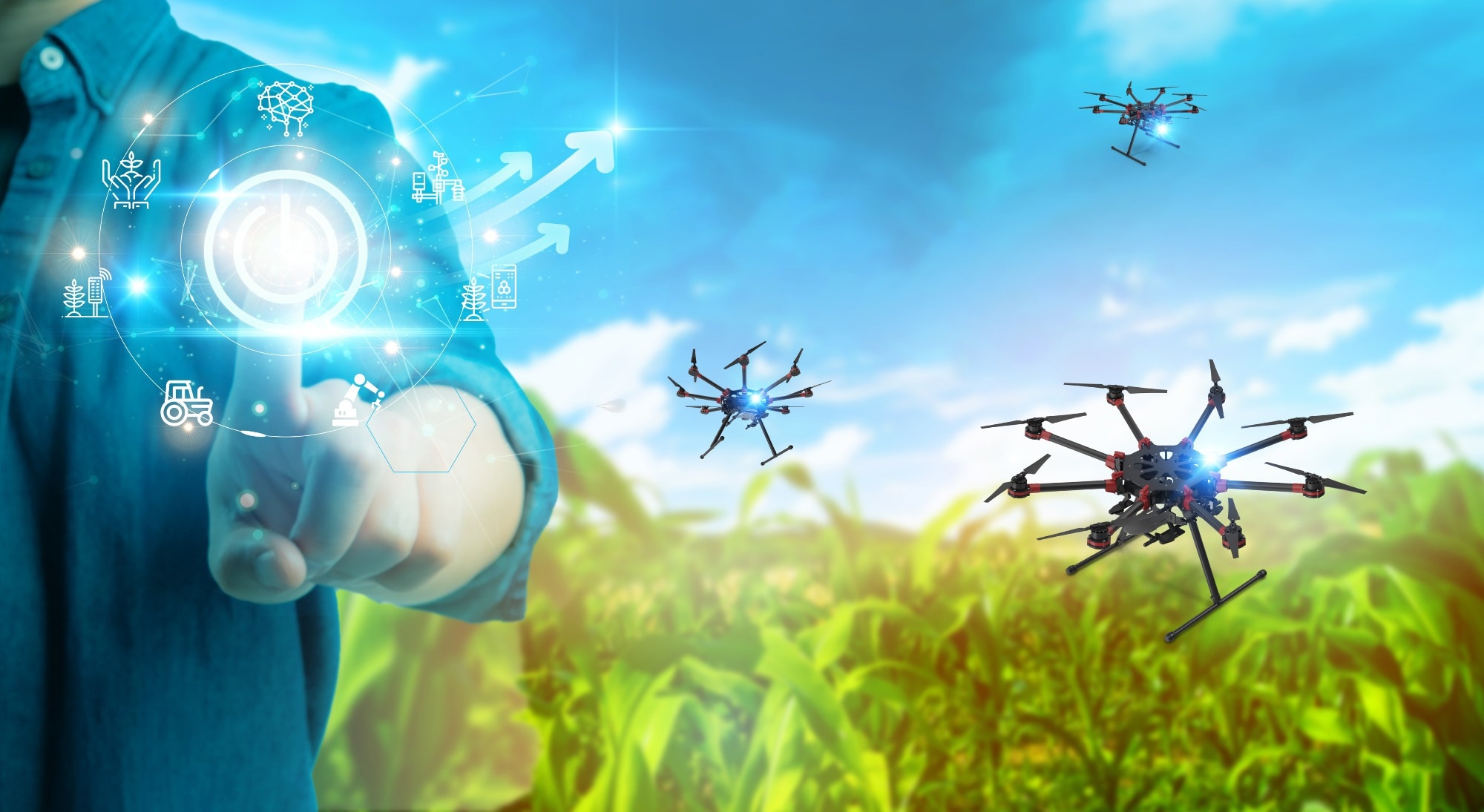In an article recently published in the journal Nature Communications, researchers created an agricultural digital twin (DT) for mandarins that demonstrated the potential for individualized agriculture. A DT refers to a digital representation closely resembling or replicating a real-world object by combining interdisciplinary knowledge and advanced technologies such as artificial intelligence (AI).
 Study: Agricultural Digital Twins for Precision Farming. Image credit: MangKangMangMee/Shutterstock
Study: Agricultural Digital Twins for Precision Farming. Image credit: MangKangMangMee/Shutterstock
Digital twins in agriculture
The concept of DT, which is the implementation of real-world physical systems' virtual counterparts in a digital environment, has been introduced in different fields, including agriculture. DT enables users to analyze, model, and simulate data to make informed decisions. DT depends on the integration of advanced technologies such as AI, big data analytics, geographic information systems (GIS), remote sensing, Internet of Things (IoT), and information and communication technologies (ICT).
In agriculture, ICT provides the necessary communication networks and infrastructure for analyzing, storing, aggregating, and acquiring data from remote sensing and IoT devices, enabling farmers to use and access digital platforms for crop management and precision farming. Digital imagery generated from satellites and unmanned aerial vehicles (UAVs)/remote sensing has shifted from the homogeneous management of heterogeneous fields' approach to the heterogeneous management of heterogeneous fields.
Thus, the agricultural data must be managed with geospatial and longitudinal data to implement agricultural practices at the right location and time for this paradigm shift. Systematic data management and big data can enable DT to predict future outcomes. Specifically, AI techniques such as deep learning (DL) and machine learning (ML) can be utilized for data-driven decisions and predictions. These results provide farmers with the insights required for improved decision-making and supplying the necessary input resources at every plant growth stage for each square meter in an agricultural field.
The study
In this study, researchers created an agricultural DT using mandarin (Citrus unshiu) as a model crop to demonstrate the feasibility of an agricultural DT to support data-driven decisions and data monitoring. An Open application programming interface (API) was employed to aggregate data from different sources across Jeju Island, covering an area of 185,000 hectares.
Mandarin was selected as a model crop due to its perennial nature and extensive cultivation on Jeju Island. The datasets used in this study encompassed different information, including agricultural practices, weather data, fruit quality, and soil chemical properties. These collected data were analyzed and visualized at intra-orchard, inter-orchard, and regional scales.
Monitoring at intra-orchard, inter-orchard, and regional levels, specifically the fruit quality from individual trees regularly, is necessary for successful individualized agriculture. DT can play a crucial role by ensuring efficient and accurate monitoring. Additionally, an interactive applet R Shiny was created to display the effectiveness of an agricultural DT in supporting data-driven decisions for farmers, distributors, researchers, and policymakers.
A one-kilometer grid map was created and combined with the soil data, including available organic matter, phosphate, pH, and electrical conductivity, after averaging each soil chemical component's observed values within each grid for regional-scale data visualization. In the inter-orchard analyses, two orchards that grew the same cultivar were selected randomly, and their observed fruit quality, agricultural practices, and soil conditions were compared.
An agricultural DT becomes more valuable when orchard-level variables predict fruit quality. Thus, the orchard-level weather variables, including air pressure, humidity, and temperature, were considered to perform a predictive analysis of fruit size and sugar. In the intra-orchard analyses, one hundred trees were selected randomly and observed every week in each orchard, and a unique tag number was used to identify every tree.
Significance of the work
The data visualization and analysis incorporating ML algorithms and statistical models effectively displayed the feasibility of using agricultural DT for precision agriculture and individualized agriculture, where every fruit tree was managed individually. Both could be realized by integrating multiple datasets obtained from different sources using Open APIs and creating a DT for mandarin orchard management.
Although increasing the fruit quality was the overarching goal, several factors influenced this aspect. The fruit quality varied significantly within orchards and between orchards. The intra-orchard analysis explained the fruit quality variation more substantially compared to the inter-orchard analysis. Additionally, the tree-level variations and longitudinal patterns could be monitored for quality control purposes when regular data updates were available.
This can make individualized agriculture a feasible agricultural system in the future. Based on this concept, the existing agricultural system that produces high-quality products in smaller areas can be applied to large areas of open fields. Moreover, individualized agriculture could also play a critical role in the small-scale multi-variety production systems.
To summarize, the findings of this study successfully displayed the potential use of agricultural DTs for micro-precision and individualized agriculture, enabling customized treatment for plants.